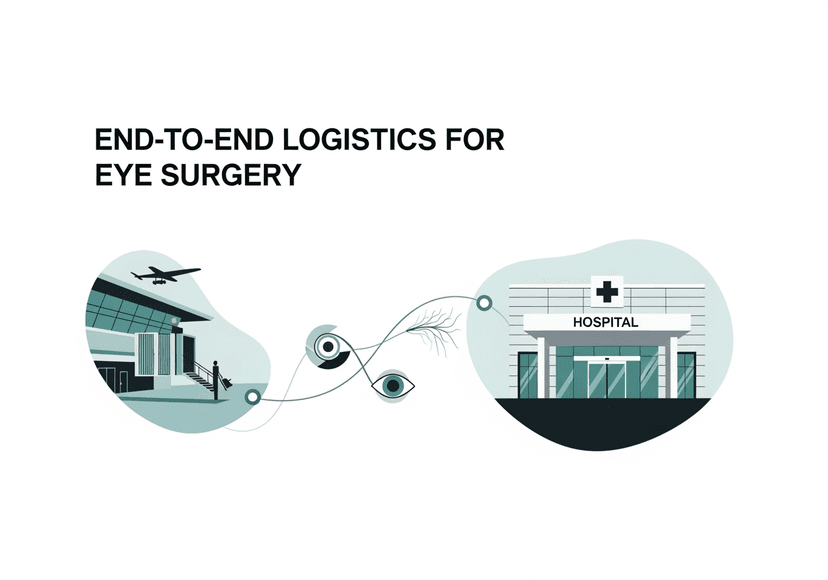
The Role of Technology in Breast Cancer Surgery: Insights from India's Best Surgeons
10 Apr, 2023
 Healthtrip
HealthtripBreast cancer is one of the most prevalent forms of cancer worldwide and affects millions of women every year. In India, breast cancer is the most common cancer among women, with more than 150,000 new cases diagnosed every year. Despite advances in breast cancer treatment, surgery remains the primary treatment option for early-stage breast cancer.
Over the years, technology has played an increasingly important role in breast cancer surgery. From diagnostic tools to surgical instruments, technology has helped surgeons to improve patient outcomes, reduce complications, and enhance the precision of surgical procedures. In this blog, we will discuss the role of technology in breast cancer surgery, and gain insights from some of India's best breast cancer surgeons.
Most popular procedures in India
Diagnostic Technologies
- Early diagnosis is crucial in treating breast cancer, as it significantly improves survival rates. Technology has revolutionised breast cancer diagnosis, and new diagnostic tools are continually being developed to improve the accuracy and speed of diagnosis.
- Mammography is the most commonly used diagnostic tool for breast cancer. It is a low-dose X-ray that can detect breast cancer at an early stage, even before a lump is palpable. Digital mammography is an advanced form of mammography that uses digital detectors instead of X-ray film, which allows for better image quality and lower radiation exposure.
- Dr. Shubham Jain, a renowned breast cancer surgeon in Mumbai, emphasises the importance of early diagnosis, saying, "The earlier we detect breast cancer, the easier it is to treat it. With advancements in technology, we can detect breast cancer at an early stage and provide timely treatment."
- In addition to mammography, other diagnostic tools, such as ultrasound, magnetic resonance imaging (MRI), and positron emission tomography (PET) scans, can help to diagnose breast cancer and determine its stage and extent.
Surgical Technologies
Wellness Treatments
Give yourself the time to relax
Lowest Prices Guaranteed!

Lowest Prices Guaranteed!
- Surgery is the primary treatment option for early-stage breast cancer, and technology has transformed the way breast cancer surgery is performed. Minimally invasive techniques, such as laparoscopic and robotic surgeries, have significantly reduced the trauma associated with surgery, resulting in faster recovery times, less pain, and fewer complications.
- Laparoscopic surgery is a minimally invasive surgical technique that uses small incisions and specialised instruments to remove the tumour. Dr. Rakesh Kain, a leading breast cancer surgeon in Delhi, explains the advantages of laparoscopic surgery, saying, "Laparoscopic surgery results in smaller scars, less pain, and a quicker recovery time than traditional open surgery."
- Robotic surgery is another minimally invasive technique that uses robotic arms to perform surgery. The surgeon controls the robotic arms, which are equipped with specialised instruments, from a console in the operating room. Dr. Sunil Choudhary, a top breast cancer surgeon in Mumbai, explains the advantages of robotic surgery, saying, "Robotic surgery allows for greater precision and control, resulting in better outcomes and fewer complications."
- In addition to laparoscopic and robotic surgeries, other surgical technologies, such as intraoperative radiation therapy (IORT), have revolutionised breast cancer surgery. IORT is a technique that delivers a single dose of radiation directly to the tumour site during surgery, reducing the need for multiple radiation treatments after surgery.
- Dr. Choudhary highlights the benefits of IORT, saying, "IORT reduces the total treatment time for breast cancer patients and minimises radiation exposure to healthy tissue, resulting in fewer side effects."
Post-Surgical Technologies
- After surgery, breast cancer patients often require additional treatments, such as chemotherapy or radiation therapy, to prevent cancer recurrence. Technology has significantly improved the delivery of these treatments, making them more effective and reducing side effects.
- One such technology is intensity-modulated radiation therapy (IMRT), which uses computer-controlled X-ray beams to deliver precise doses of radiation to the tumour site while minimising exposure to healthy tissue. Dr. Kain explains the advantages of IMRT, saying, "IMRT allows for more targeted radiation therapy, resulting in fewer side effects and better outcomes for breast cancer patients."
- In addition to radiation therapy, targeted therapy has emerged as a new treatment option for breast cancer. Targeted therapy uses drugs that specifically target cancer cells, sparing healthy cells and reducing side effects. Dr. Jain explains the benefits of targeted therapy, saying, "Targeted therapy has revolutionised breast cancer treatment, providing a more personalised approach and improving outcomes for patients."
- Dr. Kain explains the advantages of IMRT, saying, "IMRT allows for more targeted radiation therapy, resulting in fewer side effects and better outcomes for breast cancer patients."
Digital Health Technologies
- Digital health technologies, such as telemedicine and mobile apps, have also played a significant role in breast cancer care. Telemedicine allows doctors to consult with patients remotely, reducing the need for travel and improving access to healthcare for patients in remote areas. Mobile apps, such as My Cancer Pal and Breast Cancer Healthline, provide patients with information about their condition, medication reminders, and support from other breast cancer patients.
- Dr. Choudhary highlights the importance of digital health technologies, saying, "Digital health technologies have transformed the way we provide breast cancer care, making it more accessible and patient-centric."
Challenges and Future Directions
- While technology has transformed breast cancer care, it also poses several challenges. The cost of advanced technologies can be prohibitively expensive, making it inaccessible to many patients. In addition, not all breast cancer surgeons have access to the latest technologies, leading to disparities in care.
- Dr. Jain emphasises the need to address these challenges, saying, "We need to ensure that all breast cancer patients have access to the latest technologies, regardless of their socio-economic status. We also need to train more breast cancer surgeons in advanced surgical techniques and technologies."
- Looking to the future, several new technologies are on the horizon that could further revolutionise breast cancer care. For example, liquid biopsies are being developed that can detect cancer by analysing a patient's blood, reducing the need for invasive biopsies. Artificial intelligence (AI) is also being explored for its potential to improve breast cancer diagnosis and treatment planning.
- Dr. Kain is optimistic about the future of breast cancer care, saying, "I am excited to see how technology will continue to transform breast cancer care, providing better outcomes and quality of life for our patients."
Conclusion
In conclusion, technology has played a significant role in breast cancer surgery, improving patient outcomes and reducing complications. India's best breast cancer surgeons have embraced technology and innovation to provide the best possible care to their patients. While challenges remain, the future of breast cancer care looks promising, with new technologies on the horizon that could further improve patient outcomes. Ultimately, the key to success in breast cancer surgery is the combination of advanced technology and the expertise of skilled and experienced breast cancer surgeons. Technology has played an increasingly important role in breast cancer surgery, from early diagnosis to post-surgical care. Minimally invasive surgical techniques, intraoperative radiation therapy, and targeted therapy have significantly improved patient outcomes and reduced complications. Digital health technologies have also transformed breast cancer care, making it more accessible and patient-centric.
Related Blogs

How Healthtrip Ensures Quality & Safety in Eye Surgery Procedures
Detailed guide on eye surgery, featuring doctors, hospitals, risks, recovery,

End-to-End Logistics for Eye Surgery with Healthtrip's Support
Detailed guide on eye surgery, featuring doctors, hospitals, risks, recovery,

Healthtrip's Care Coordinators: Your Support During Eye Surgery
Detailed guide on eye surgery, featuring doctors, hospitals, risks, recovery,

Top 5 Indian Hospitals for Eye Surgery
Detailed guide on eye surgery, featuring doctors, hospitals, risks, recovery,

Post-Eye Surgery Diet and Lifestyle Tips
Detailed guide on eye surgery, featuring doctors, hospitals, risks, recovery,

Common Risks in Eye Surgery and How Healthtrip Manages Them
Detailed guide on eye surgery, featuring doctors, hospitals, risks, recovery,










